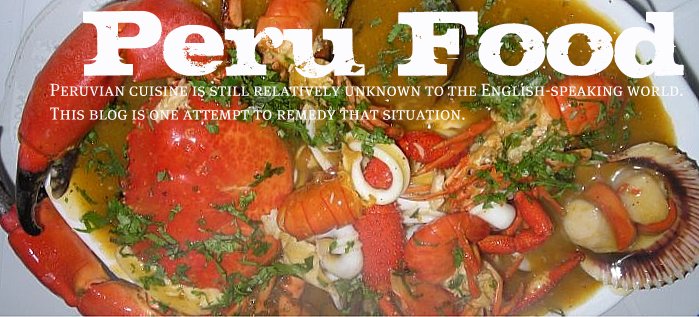
Photo: Wikipedia
Outside of South America, coca, a traditional plant cultivated throughout the Andean world, is mostly associated with cocaine production. However, Gastón Acurio and other Peruvian chefs are exploring new, culinary uses for the coca leaf as this article, recently published at Bloomberg, points out.
The author has kindly granted permission to republish the article here at Peru Food.
Peruvian Chef Looks Beyond Cocaine to Create Coca-Leaf Cuisine by Bill Faries
Chef Gastón Acurio runs restaurants across South America that feature Peruvian specialties such as ceviche and manioc. Some also offer dishes that contain coca leaf, which is the source of cocaine.
Acurio and a coterie of Peruvian chefs prepared a multi-course dinner for [Peruvian] President Alan Garcia and his cabinet in December. The menu, all legal, included desserts from coca-leaf flour and coca sour cocktails, a twist on the country's signature drink, the pisco sour.
'It's been over 100 years since an American found in the coca leaf the opportunity to make one of the world's most famous brands -- Coca-Cola,' said Acurio, who has restaurants called Astrid & Gaston in Peru, Chile, Colombia and Ecuador. 'If we can find other legal uses for the coca leaf, it would mean the beginning of a new era in the Andes.'

Photo: MacAllenBrothers
Concerns that drug cartels could take advantage of an expanded legal market in coca to produce and sell more cocaine led most countries to ban international trade in the leaf. A 1961 United Nations treaty stipulates that governments may allow international trade in coca leaves as a flavoring agent as long as the alkaloids, the basis of cocaine, are removed. That is how Coca-Cola Co. uses the leaf, Dominic Streatfeild, author of Cocaine: An Unauthorized Biography said from London.
'For proprietary reasons, the Coca-Cola Company does not disclose information about what flavorings we do or do not use,' Kari Bjorhus, a spokeswoman for the Atlanta-based company, wrote in an e-mail. The ingredients are safe and in compliance with regulations, she said.

Photo: bastiand
Erythroxylum coca is a bush with elliptical leaves that can be harvested for about 20 years, according to the UN Office on Drugs and Crime. The coca leaf, a stimulant that has been chewed in the Andes since pre-Inca times, is consumed legally in teas and soft drinks in Bolivia, Ecuador and Peru.
Acurio, 39, said his dishes prove that coca leaves can have a productive use that would help expand markets for poor farmers across the Andes, a position backed by leaders in Peru and Bolivia.
For his 80th birthday, Cuban President Fidel Castro received a cake baked with coca flour from Bolivian President Evo Morales, said Alex Contreras, Morales's spokesman. Morales led Bolivia's coca growers union before becoming president and is a vigorous proponent of creating more legal ways to use the coca leaf.

Photo: Lars Kristian Schjønhaug
In September, Morales took a coca leaf, illegal in the U.S., to New York and held it aloft when he addressed the UN General Assembly.
'How is it possible that the coca leaf is legal for Coca- Cola but illegal for other medicinal purposes in our country and the rest of the world?' Morales asked. Bolivia is South America's poorest country.
Morales maintains that coca is part of Bolivia's heritage. He said last [in December] that he might increase the area legally dedicated to coca production in his country. In 2005, 160,000 hectares (400,000 acres) in Bolivia, Colombia and Peru were used for coca cultivation, legal and illegal, according to the UN drug office.
'We need to combat the perception outside Latin America that coca equals cocaine,' said Gustavo Guzman, Bolivia's ambassador to the U.S.

Photo: _e.t
Visitors to Andean countries often are served free coca tea in hotels and restaurants to help them adjust to the effects of high altitude. Bolivia's capital, La Paz, is at 11,200 feet (3,400 meters). The ruins of Machu Picchu, an Incan city in Peru, are almost 8,000 feet above sea level.
'You can buy coca tea at an airport in Peru and Bolivia, but when you arrive in the U.S., you could be arrested,' Streatfeild said.

Photo: cpurrin1
The U.S., which backs the eradication of illegal coca plantations and funds alternative crop programs in Bolivia, Colombia, Ecuador and Peru, says any changes in coca policies would require amending three international conventions that limit production.
'The simple fact is that excess coca will always end up as cocaine because drug traffickers can always pay the best price,' U.S. Ambassador Philip Goldberg said after a December meeting with Bolivia's foreign minister in La Paz.
The U.S., the world's biggest cocaine market, is the main destination for South American cocaine, according to the UN drug office. More than 90 percent of the U.S. supply is produced by Colombia, according to the U.S. State Department's 2006 International Narcotics Control Strategy Report.

Photo: Mint coca leaf ice cream by cookbadder, which appeared at Cooking up a Storm
Peruvian President Alan Garcia affirmed his country's commitment to fight drug trafficking and illegal coca cultivation in a meeting with U.S. President George W. Bush in October. Two months later, the U.S. extended trade preferences to Peru, Bolivia, Ecuador and Colombia, based in part on their efforts to reduce illegal coca harvests.
Chef Acurio, who said he would like to serve coca sours in restaurants he plans to open this year in Madrid and San Francisco, argues that the potential benefits of coca use are compelling.
'It's a nutritious leaf with a rich flavor that can be used to season shrimp, crabs, shellfish -- almost anything you can cook with,' Acurio said. 'It's something that could be served in the best restaurants and help the poorest farmers.'
Original article: Bill Faries at Bloomberg
Peru.Food@gmail.com
.
.
.
Click here for the Peru Food main page.
TAGS: Peru, Peruvian, food, cooking, cuisine, cocina, comida, gastronomía, peruana
TAGS: Peru, Peruvian, food, cooking, cuisine, cocina, comida, gastronomía, peruana
